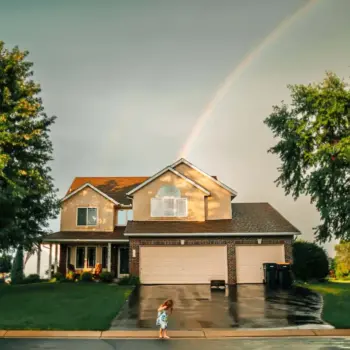Sewer backup insurance coverage
At a glance: Sewer backup is not only highly unsanitary, but the damage can be difficult and costly to repair. Standard home insurance policies do not generally cover sewer backup, meaning that if you find yourself ankle-deep in raw sewage, you may be on the hook for cleanup and repairs.
Fortunately, sewer backup coverage can be added to your existing insurance policy as an endorsement, and covers damage that results from water and sewage moving up through drain lines into your home. If you live in an area that is prone to flooding, such as a valley or other low-lying area, then adding this coverage may be in your best interest.
What does sewer backup insurance cover?
Sewer backup insurance is designed to protect you from the financial burden that a sewer backup can bring. This type of insurance covers:
- Backup or discharge from a sewer, septic tank, or storm drain
- Incidental damage from sewer backups, including the cost of cleaning or replacing walls, flooring, and furniture
- Overflow from a sump, a sump pump, or other related equipment
Your home will likely need a deep professional cleaning, especially if the sewage found its way into your ductwork. You may need to replace your drywall and flooring, as well as furniture and other personal items. Not only does this require a significant time commitment, but the cost can easily reach tens of thousands of dollars.
Coverage amounts and availability vary, ranging anywhere from $5,000 to $25,000. An insurance broker can help you determine how much sewer backup coverage you should carry for sufficient protection.
Is my home at risk?
Water from sewer system backups is highly unsanitary, carrying dangerous bacteria and viruses that can cause serious illnesses in the members of your household. E. Coli, salmonella, and hepatitis are commonly found in sewer water, as well as toxic pesticides, residuals from pharmaceutical drugs, and protozoan, all of which pose a significant danger to people and pets. A mop and a bucket are far from sufficient for handling the mess; specialized training and equipment are needed to ensure that this type of contamination is taken care of properly.
Some homes never experience a sewer backup, while other homes are prone to them. Your home may be at risk if:
- You live in an older neighbourhood with an ageing sewer system
- Your neighbourhood has a lot of trees and shrubs; roots from these can break into service lines and cause blockages
- Your pipeline system carries both rainwater and sewage
- You live in a valley or other low-lying region
- At its lowest point, your home does not sit at least 30 centimetres above the nearest upstream manhole of the sewer main
Preventing sewer backup
While there is no surefire way to ensure that you never experience a sewer backup, there are several preventative measures that you can take to significantly decrease your risk.
- Dispose of grease properly: Fats, sauces, and cooking grease should never be dumped down the drain. Once they’re in the drain, these oils will cool and solidify, eventually forming a complete blockage. Instead, pour the oil into a heat-proof container and throw it away.
- Replace damaged and outdated pipes: Many homeowners don’t realise that not only are they responsible for the pipes within their home’s structure, but they’re also responsible for maintaining the pipes that run between their home and the sewer main. If you have old clay or cast-iron sewer lines, then update them with plastic or PVC pipe.
- Install a sump pump: If your home has a basement, install a sump pump to pump out any water that collects at its lowest point.
- Install a backwater prevention valve: A backwater prevention valve allows water to pass through a pipe in only one direction. In the event of a backup, the valve will close up, preventing water and sewage from coming up through the drains.
An insurance broker can help you get the best deal
Different insurance companies offer different types of water damage insurance options, endorsements, and discounts, and comparing these products alone can be a daunting task. Rather than promoting a specific insurance company or type of coverage, an insurance broker can help you weigh your needs and options and build an insurance policy that will best fit your lifestyle and budget.
Call today to see how our brokers can help.
You are unique, so are your insurance options.
As a brokerage for over 70 of Canada’s top insurers, we have access to a wide range of insurance solutions at some of the best rates in Ontario. Want to learn more about the coverage options available to you? Here’s a few of them.









